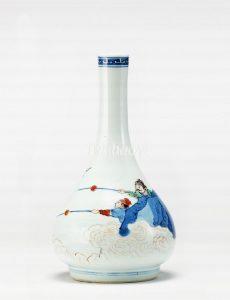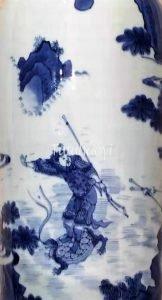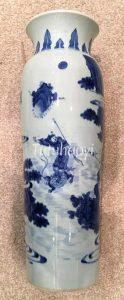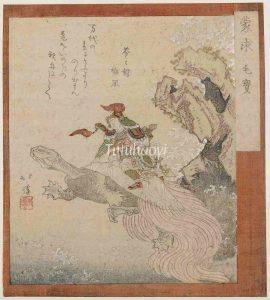White-backed tortoise repaying gratitude
白龟报恩
© Tutuhaoyi.com owns the copyright of the description content for the images attached. Quoting all or part of the description content on this page is permitted ONLY IF ‘Tutuhaoyi.com’ is clearly acknowledged anywhere your quote is produced unless stated otherwise. (本页描述内容版权归Tutuhaoyi.com所有,转发或引用需注明 “Tutuhaoyi.com”, 侵权必究, 已注开源信息的条目除外。)
When Prefect Mao Bao 毛宝 was stationed in the city of Wuchang 武昌, Hebei province, during the Jin dynasty (晋 265-420), there was a story about a white tortoise who repays its benefactor by saving his life.
One day, one of Mao Bao’s soldiers went to market for groceries and returned to the camp with an extra white tortoise. The tortoise was about four or five inches long and still young and vulnerable. So the soldier took the responsibility to feed it. When the tortoise grew to be too large to be living in a tub, the soldier set it free to the Yangtze River. Later, the army that the soldier belonged to was defeated in a battle. In despair, the soldier put on his full armour and threw himself into the river with his cleaver in the hand. Curiously, he found himself landed on a rock unhurt. To his amazement, it was none other than the very white-backed tortoise he had raised! Now it turned out to be a giant fellow, 6 to 7 feet long. The tortoise carried the solider to the east shore and he survived the enemy’s slaughter.
image identification and literature research by Dr Yibin Ni
Another story relating to ‘Repaying Gratitude’:
Fig 1-2: porcelain bottle with underglaze blue and overglaze enamelled decoration, 17th century, courtesy of Sir Michael Butler Collection
Fig 3-4: rolwagen vase with underglaze blue decoration, Chongzhen period (1627-44), courtesy of Mr Anthony Lovett
Fig 5: porcelain lidded jar with underglaze blue decoration, Kangxi period (1662-1722), private collection
Fig 6: woodblock print (surimono), ink and colour on paper, Totoya Hokkei (Japanese, 1780-1850), courtesy of the Museum of Fine Art, Boston





